Pizza or Pasta Sauce: Which Is the Right Choice?
Pizza sauce and pasta sauce might seem interchangeable, but each has unique characteristics perfect for specific dishes.
The basic ingredients often overlap – tomatoes, herbs, and spices create that familiar red hue we all love.
Most pizza sauces remain uncooked before hitting the oven, preserving a fresh tomato flavor that intensifies during baking.
Traditional Italian kitchens treat these sauces differently; one sits atop dough while the other coats strands of spaghetti or rigatoni.
Texture plays a crucial role too, since pizza sauce typically maintains a thicker consistency to prevent soggy crusts.
Some home cooks make both from scratch, adjusting seasonings based on personal preference and regional influences.
Once you understand these subtle distinctions, your homemade Italian meals will reach new heights of authenticity and flavor.
What Is A Perfect Pizza Sauce?
Pizza sauce is a key component of artisan pizza - uncooked, thick, and smooth with a fresh, tangy tomato flavor, slight sweetness, and Italian herbs that complement melted cheese.
It typically includes tomato puree, garlic, red wine vinegar, sugar, oregano, salt, and pepper.
Sometimes plain tomato sauce or paste is used.
The sauce is kept thick to prevent soggy dough and uncooked because pizzas bake at high temperatures (400–500℉), cooking the sauce along with the crust.
Uncooked sauce tastes fresher and more vibrant since cooking it twice can dull the flavor.
While traditional Italian pizza sauce is uncooked, some New York-style pizzas use slow-simmered cooked sauce, which develops a richer flavor preferred by many Americans.
However, Italian sauce relies on high-quality tomatoes for a fresh, natural taste without heavy seasoning.
Exploring Pasta Sauce
Pasta sauce is a flavorful condiment that complements pasta dishes, typically made from tomatoes, herbs, and spices. It comes in various types as well.
Pasta sauces are usually cooked slowly to develop depth and enhance their flavors, creating a thick texture that clings well to noodles. Versatile and essential, pasta sauce transforms simple pasta into a satisfying and delicious meal.
Types of Pasta Sauce
Pizza Sauce vs. Pasta Sauce: What to Set Them Apart
Pizza sauce and pasta sauce have several key differences despite both being tomato-based.
| Feature | Pizza Sauce | Pasta Sauce |
| Base | Thick tomato puree or paste, designed to stay on pizza dough without soaking through | Tomato-based with herbs and spices; can be light (marinara), creamy (Alfredo), or meaty (Bolognese) |
| Preparation | Usually uncooked or lightly mixed; cooks quickly on pizza during baking | Slowly cooked to develop rich, deep flavors and thick texture that clings to pasta |
| Texture | Thick and smooth to prevent soggy crust | Thick and varied—from light and fresh to rich and hearty—clings well to noodles |
| Flavor Profile | Fresh, tangy, slightly sweet with Italian herbs like oregano and basil | Flavorful and complex, ranging from herbaceous and light to creamy or meaty |
| Cooking Method | No or minimal pre-cooking; baked with pizza | Simmered slowly to blend and intensify flavors |
| Usage | Spread thinly as a base layer under toppings on pizza | Tossed or ladled onto pasta to coat thoroughly |
| Purpose | To complement toppings without overpowering or sogging crust | To enhance pasta with robust, layered flavors for a complete dish |
| Preparation | Usually uncooked to preserve fresh tomato flavor; cooked on pizza during baking | Always slow-simmered or cooked to develop flavor and thicken the sauce |
Base
Pizza sauce is typically made from tomato puree or tomato paste and has a thick consistency to keep the pizza dough from getting soggy while baking. In contrast, pasta sauce usually uses crushed tomatoes or tomato puree and is thinner and more watery, allowing it to cling well to the pasta.
Plus, pasta sauces aren’t limited to tomato bases; they can also be cream-based, oil-based, or even cheese-based.
Preparation
One of the main differences in preparation is that pizza sauce is typically uncooked or only briefly cooked. The sauce cooks directly on the pizza while it bakes in the oven, preserving a fresh tomato flavor.
However, pasta sauce is always slow-simmered or cooked over low heat to develop a richer flavor and to thicken the sauce.
Texture
Pizza sauce has a thick, smooth texture designed to stay on the dough without soaking through. Pasta sauce usually has a consistency that’s thicker than marinara but thinner than pizza sauce.
Many pasta sauces are chunky and may include pieces of meat or vegetables, providing additional texture.
Flavor Profile
The flavor of pizza sauce is fresh and tangy with a slight sweetness, often seasoned with Italian herbs like oregano and basil. Pasta sauce tends to have a richer and more complex flavor due to the inclusion of garlic, onions, herbs, and sometimes meat, creating a deeper taste that complements the pasta.
Cooking Method
Pizza sauce is generally not pre-cooked or only briefly cooked because it finishes cooking in the oven with the pizza. Pasta sauce requires longer cooking, simmered on the stove for an extended period to allow the flavors to blend fully and the sauce to thicken.
Usage
Pizza sauce is spread thinly across the pizza dough as a base layer for toppings. Pasta sauce is ladled or tossed with cooked pasta, designed to coat each strand or piece evenly to deliver maximum flavor with every bite.
Purpose
The purpose of pizza sauce is to complement the toppings without overpowering them while also preventing the crust from getting soggy. Pasta sauce’s role is to provide a robust and flavorful coating that binds well with the pasta, ensuring a balanced and satisfying dish.
How to Make Pizza Sauce in a Flash
Making your own pizza sauce at home beats the store-bought version in flavor and quality. With just a bit of free time, you can create a sauce that truly elevates your pizza game.
Ingredients of Pizza Sauce
To make pizza sauce, you'll need:
Instructions to Make Pizza Sauce
Step 1: In a medium bowl, mix tomato sauce and tomato paste until smooth with no lumps.
Step 2: Add the remaining seasonings and stir well.
Your pizza sauce is ready to use!
Keep the sauce in an airtight container.
Refrigerate for up to 2 weeks or freeze for up to 2 months.
Making Homemade Pasta Sauce
Making pasta sauce from scratch isn't hard at all, just a bit more involved than pizza sauce. After mastering the basic recipe, you can easily change it up with herbs, spices, or even some red wine for a deeper taste.
Ingredients of Pasta Sauce
Here are some ingredients to make pasta sauce.
Instructions to Make Pasta Sauce
Step 1: Heat olive oil in a large pan over medium heat. Add garlic, carrots, and onions, cooking for 5 minutes until softened.
Step 2: Pour in crushed tomatoes and water. Season with salt, pepper, paprika, oregano, and red pepper flakes.
Stir in parsley and basil.
Step 3: Bring sauce to a boil, then lower heat and simmer covered for 15-20 minutes.
Check after 10 minutes and add water if too thick (pasta cooking water works great).
Step 4: Add cooked pasta to the sauce and cook together over low heat for 5 minutes if serving immediately.
Cool sauce before storing in an airtight container in the fridge for up to 4 days. For longer storage, freeze in a sealed freezer bag for up to 3 months.
Can I Swap Pizza Sauce for Pasta Sauce and Vice Versa?
You can swap pizza sauce and pasta sauce, but with some adjustments.
Pizza sauce is thicker and uncooked, so if using it as pasta sauce, you’ll want to thin it out with a bit of water or broth.
Then, simmer it gently with some extra herbs and spices to deepen the flavor and cook out the raw tomato taste.
In contrast, pasta sauce is cooked and thinner, so to use it as pizza sauce, reduce it by simmering to thicken.
This helps avoid soggy pizza dough. You can also skip cooking if you prefer a fresher taste, but a thicker consistency is key.
How to Store These Sauce Right
Storing pizza sauce and pasta sauce properly helps maintain their freshness and flavor. For both sauces, transfer them into airtight containers once cooled to prevent contamination and moisture loss.
Store in the refrigerator for up to 1–2 weeks. For longer storage, freeze the sauces in freezer-safe containers or bags, leaving some space for expansion.
Frozen sauce can last for up to 3 months.
When reheating, thaw sauce in the fridge overnight and warm gently on the stove to preserve the flavor and texture.
Avoid repeated heating and cooling cycles to maintain the best quality.
Common Mistakes When Using Pizza and Pasta Sauce
You should avoid these mistakes to have perfect pizza and pasta sauce.
Got Questions? We’ve Got Solutions
1. Can I use pasta sauce on pizza?
Yes, you can use pasta sauce on pizza, but it's typically thinner and has more herbs. For best results, simmer it to reduce excess liquid before spreading on pizza dough.
2. Why is pizza sauce usually uncooked?
Pizza sauce is traditionally uncooked because it cooks while the pizza bakes, giving it a fresher tomato flavor. The high heat of pizza ovens quickly cooks the raw sauce without making it too thick.
3. How long do homemade pizza and pasta sauces last in the fridge?
Homemade sauces typically last 3-5 days in the refrigerator in airtight containers. For longer storage, freeze them in freezer-safe containers for up to 3 months.
4. Do restaurants use the same sauce for pizza and pasta?
Most quality restaurants use different sauces. Pizza sauce is usually simpler with fewer ingredients, while pasta sauce is more complex with longer cooking times to develop deeper flavors.

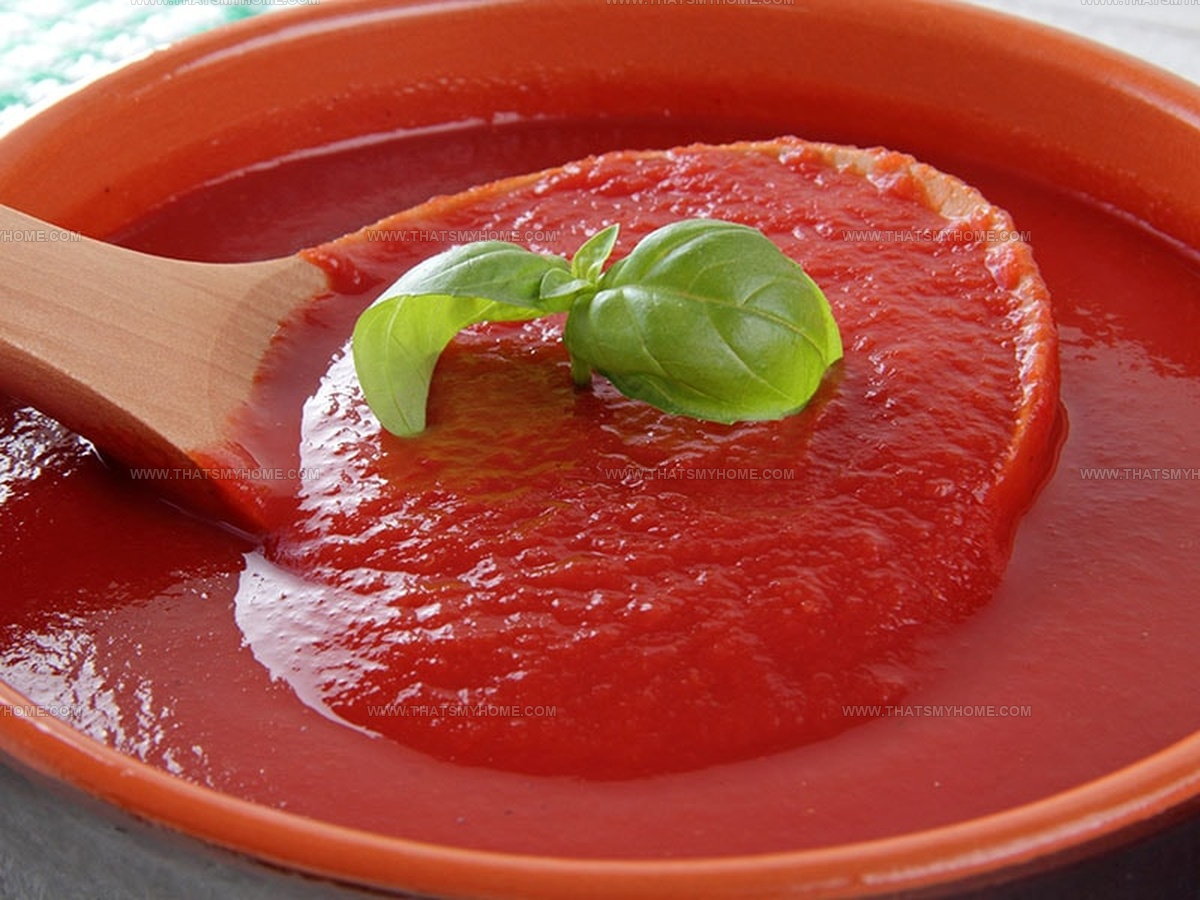
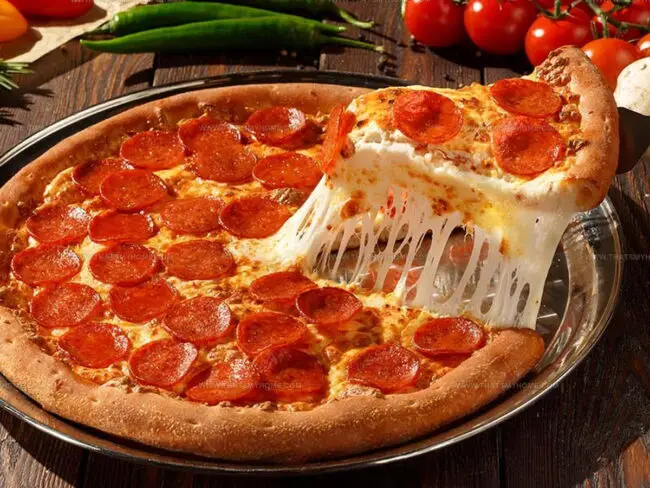
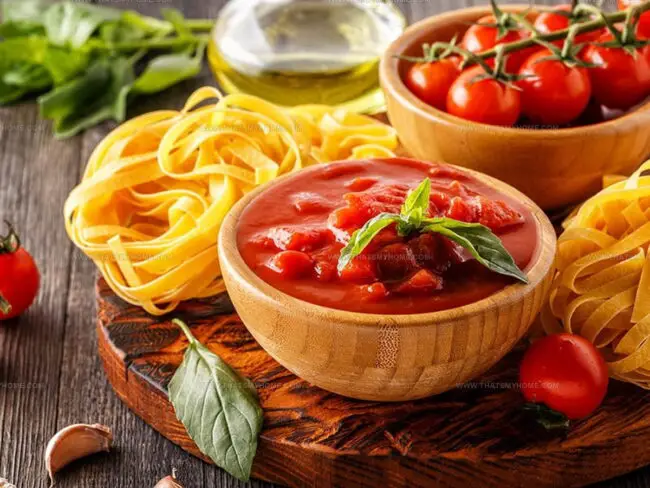
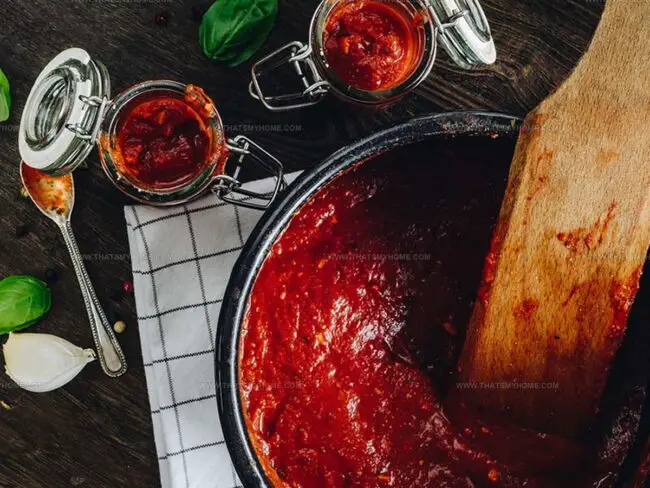
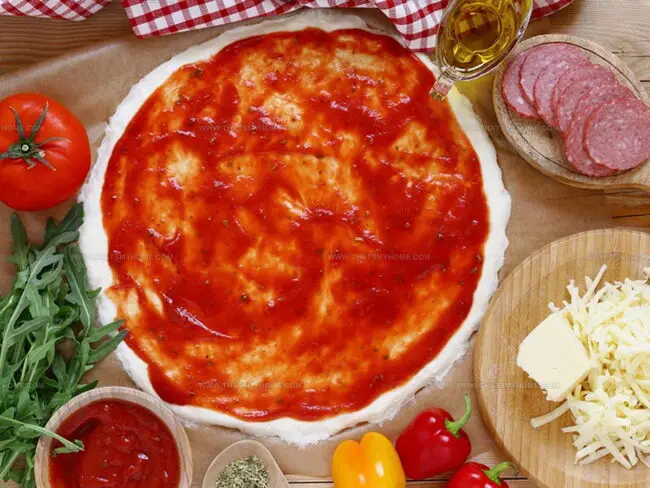
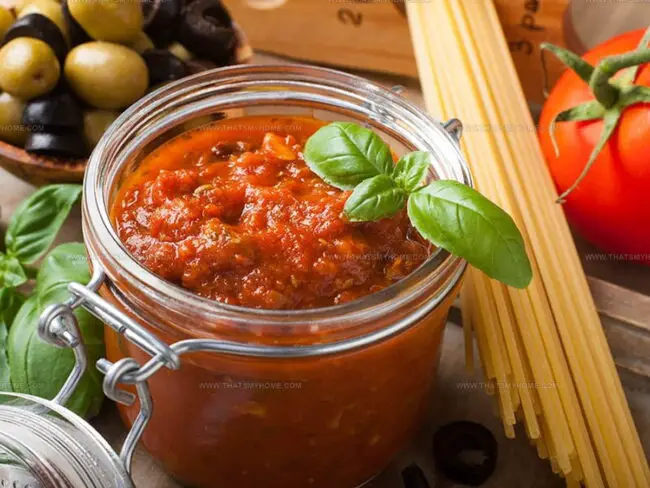
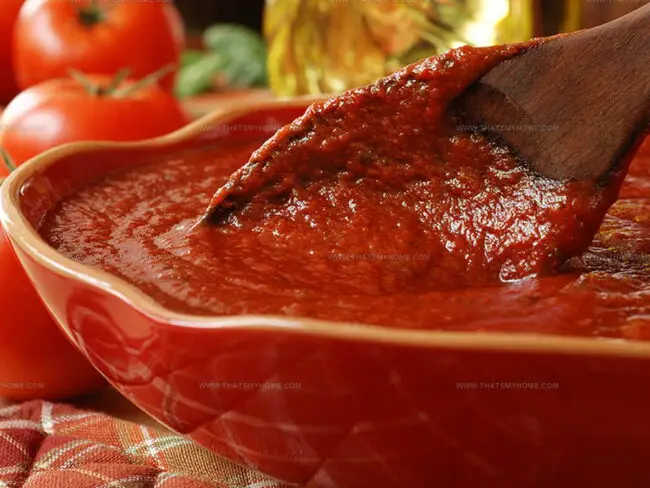
Mary Ellen
Expertise
Education